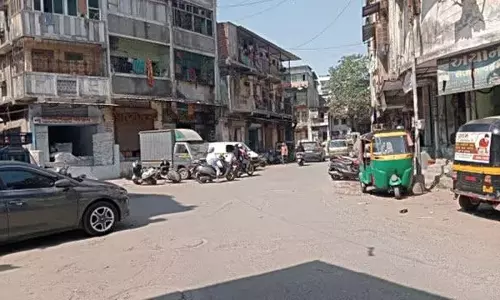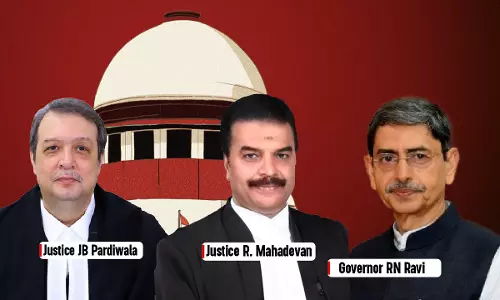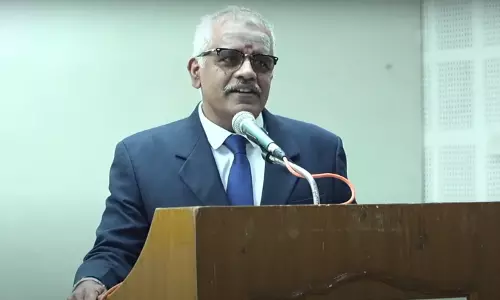What Is The Newly Notified Information Technology (Intermediary Guidelines And Digital Media Ethics Code) Rules, 2021.?

The government on 25th February notified about the Information Technology (Intermediary Guidelines and Digital Media Ethics Code) Rules, 2021 at a press conference with the presence of Prakash Javedkar (Minister for Information and Broadcasting) and Ravi Shankar Prasad (Minister for Electronics and Information Technology) which aims to regulate social media, digital media and OTT...
The government on 25th February notified about the Information Technology (Intermediary Guidelines and Digital Media Ethics Code) Rules, 2021 at a press conference with the presence of Prakash Javedkar (Minister for Information and Broadcasting) and Ravi Shankar Prasad (Minister for Electronics and Information Technology) which aims to regulate social media, digital media and OTT Platforms (Over The Top). The said rules are neither under parliament scrutiny nor are they statutory but it still provides broad powers to the government for regulating and censoring social media intermediaries including the online news media. The new rule empowers the Information & Broadcasting Secretary to directly block the content for public access for specific content in case of an emergency.
According to the newly unveiled rules, an intermediary refers to portals of the social media network, media sharing sites, portals, blogs, websites, apps, online discussion forums, and "other such functional intermediaries". As a part of rules and regulations for its users, an entire list of DO's and DON'T's have been made for the online platforms. Also, they borrowed most of the rules from an existing regulation controlling and governing the television media which includes the grievance redressal mechanism. For example – the online platform will be following the program code mentioned under the cable television network regulation act and should also fulfill the norms of journalistic conduct prescribed by the press council of India which regulates the content produced on television and print media. Likewise, Over The Top platform (OTT) will not be allowed to produce and stream any content which is against the sovereignty and integrity of India, which is hurtful and damages our country friendly relations with other countries, and any content, which is likely to stir up and encourage any kind of violence or disturb public order in the state or country.
As per the rules, the platform will also have to consider India's diverse racial and religious nature and take proper precautions while streaming activities, practices, beliefs, or acts of any religious or racial groups.
The grievance mechanism which the government-mandated will be a three-tier mechanism
1st Tier- Grievance Redressal Mechanism- Should be established by the platform itself. Any complaint regarding the violation will be firstly dealt by the company itself. The new rules mandate the digital new companies to form a grievance redressal mechanism and appoint a grievance officer in India.
The company must ensure that the decision against the complaint should be taken within 15 days and communicate the decision to the complainant within a reasonable specified time. If the decision does not satisfy the complainant then they may take the complaint to an appellate tier that is a self-regulatory body.
2nd Tier- Self Regulatory Body- Must be presided by a supreme court or a high court judge or any other eminent person from the field of media, entertainment, child rights, broadcasting, human rights, or other relevant fields.
A body containing of a total 6 members must be registered with the I&B Ministry under 30 days of its constitution. They will be addressing the grievance which was not resolved by the company earlier within the stipulated time of 15 days or else the complainant was not satisfied by the decision of the grievance officer of the company. The body will be empowered to issue a warning, censure, or ask the publisher to issue an apology or direct the publisher to add a disclaimer or a warning card.
In case the body is not satisfied by any content and feels that the content should be deleted or must be modified to prevent any mishap relating to the public order and morality of the country then they can refer such content for consideration by the Over Sight Mechanism for further action.
3rd Tier- Over Sight Mechanism- Will be dealt with by the government and an inter-ministerial committee will be formed similarly to the mechanism regulating the television industry. It will be the last tier of grievance redressal mechanism and the ministry is empowered to publish charter for self-regulatory bodies like code of ethics and code of practices.
The ministry will take the final call on the complaint and the decision of the panel will be final and an authorized officer will be empowered to direct the publisher to modify or delete the content in the complaint. In case of an emergency, this act also gives power to the ministry to block content for public access that too without allowing the platform to clarify.
BCCC (Broadcasting Content Complaints Council) for non-news channels and the NBSA (News Broadcasting Standards Authority) for new channels is the self-regulatory body in the TV Industry which caters to the complaint regarding the violation in programs. Similarly, an IMC will decide on complaints received and they can recommend several actions which also include taking the channel off air for a specific period of time.
Meanwhile, executives across multiple video streaming platforms told a website that an industry body IAMAI (Internet and Mobile Association of India) will meet shortly to discuss the rules and the way forward
Regulation Of OTT Platforms:
While streaming any content the Platform will be required to follow the law of the land and will have to mandatorily set up the three-tier grievance redressal structure like the digital media platforms.
In cases of online content, the 2nd tier which is the self-regulatory body will be empowered to direct the publisher to relook into the ratings of specific content, make relevant changes and modifications in content, age classification, and edit the synopsis of the content in question.
The rule also makes it mandatory for the content creators to differentiate their content into 5 age-based categories which are U (Universal), U/A 7+, U/A 13+, U/A 16+, and A (Adult), and must also execute parental lock feature for content coming under U/A 13+ or higher with a dependable and authentic age verification machinery for content coming under the category of "A".
Also, both the OTT Platform and the online news media will have to inform the ministry and publish a monthly report which will mention all the details of the grievance received and the action taken to address those grievances.
The rules and regulations concerning the online digital platforms may not seem prima facie severe to audience but they will surely hit the fundamental right of freedom of expression guaranteed by the Constitution. The rule unveiled once implemented, which is said to be implemented in 3 months, will affect the artistic freedom involved in creating content for such platforms, irreparably



